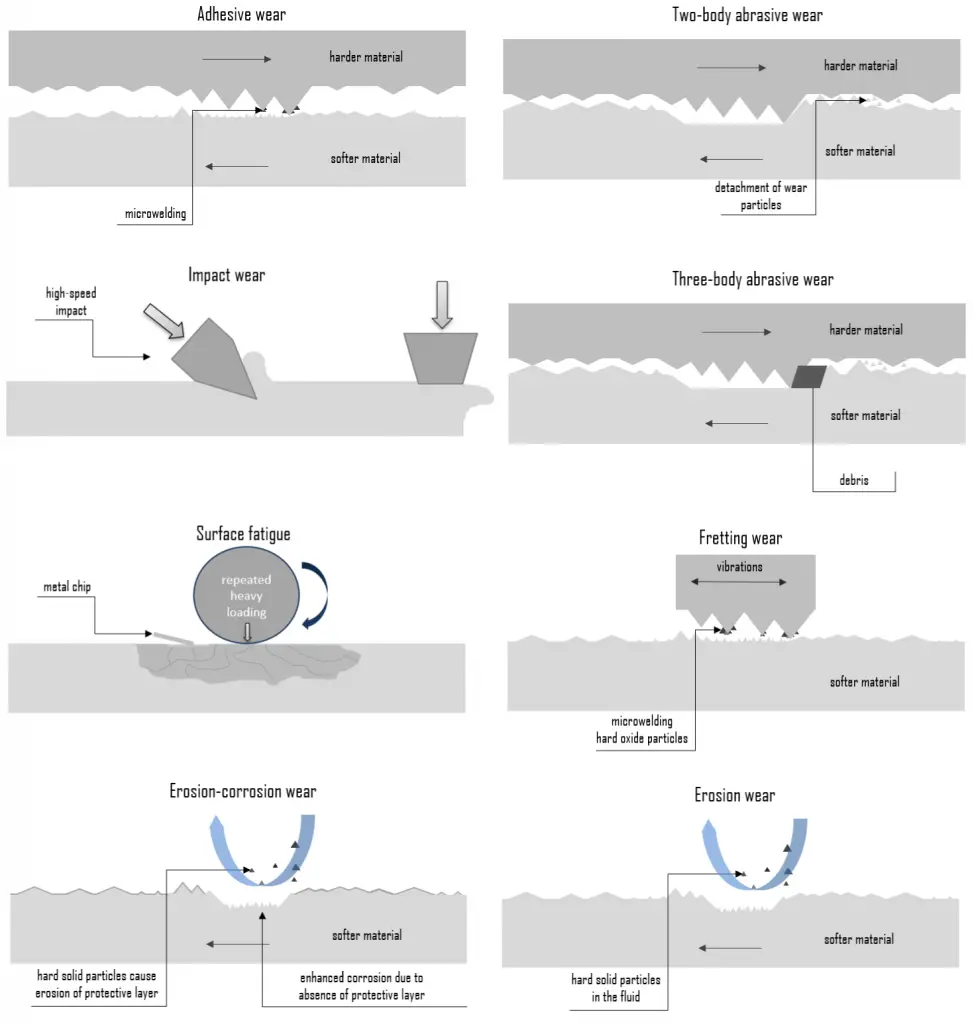 In general, wear is mechanically induced surface damage that results in the progressive removal of material due to relative motion between that surface and a contacting substance or substances. A contacting substance may consist of another surface, a fluid, or hard, abrasive particles contained in some form of fluid or suspension, such as a lubricant for example. As is with friction, the presence of wear can be either good or bad. Productive, controlled wear can be found in processes like machining, cutting, grinding and polishing. However, in most of the technological applications, the occurrence of wear is highly undesirable and it is an enormously expensive problem since it leads to the deterioration or even failure of components. In terms of safety it is often not as serious (or as sudden) as fracture. This is because wear is usually anticipated.
In general, wear is mechanically induced surface damage that results in the progressive removal of material due to relative motion between that surface and a contacting substance or substances. A contacting substance may consist of another surface, a fluid, or hard, abrasive particles contained in some form of fluid or suspension, such as a lubricant for example. As is with friction, the presence of wear can be either good or bad. Productive, controlled wear can be found in processes like machining, cutting, grinding and polishing. However, in most of the technological applications, the occurrence of wear is highly undesirable and it is an enormously expensive problem since it leads to the deterioration or even failure of components. In terms of safety it is often not as serious (or as sudden) as fracture. This is because wear is usually anticipated.
Certain material characteristics such as hardness, carbide type, and volume percent can have a decided impact on the wear resistance of a material in a given application. Wear, like corrosion, has multiple types and subtypes, is predictable to some extent, and is rather difficult to reliably test and to evaluate in the lab or in service.
Tribology
Tribology is interdisciplinar science of interacting surfaces in relative motion. Tribology includes the study and application of the principles of friction, lubrication, and wear under applied load. Efficient operation and robust performance of these machine components are highly dependent on tribology. Controlling friction helps to reduce energy loss and improve efficiency and lifetime of a machines. Wear of material from a surface can lead to severe damage and failure of the component and/or the machine. The most common approach to reduce friction and minimize wear and catastrophic failure of machine components or the machine itself is by a proper selection of materials and lubricants. In most machine components, lubricants are used to reduce friction and prevent wear.
We hope, this article, Tribology, helps you. If so, give us a like in the sidebar. Main purpose of this website is to help the public to learn some interesting and important information about materials and their properties.